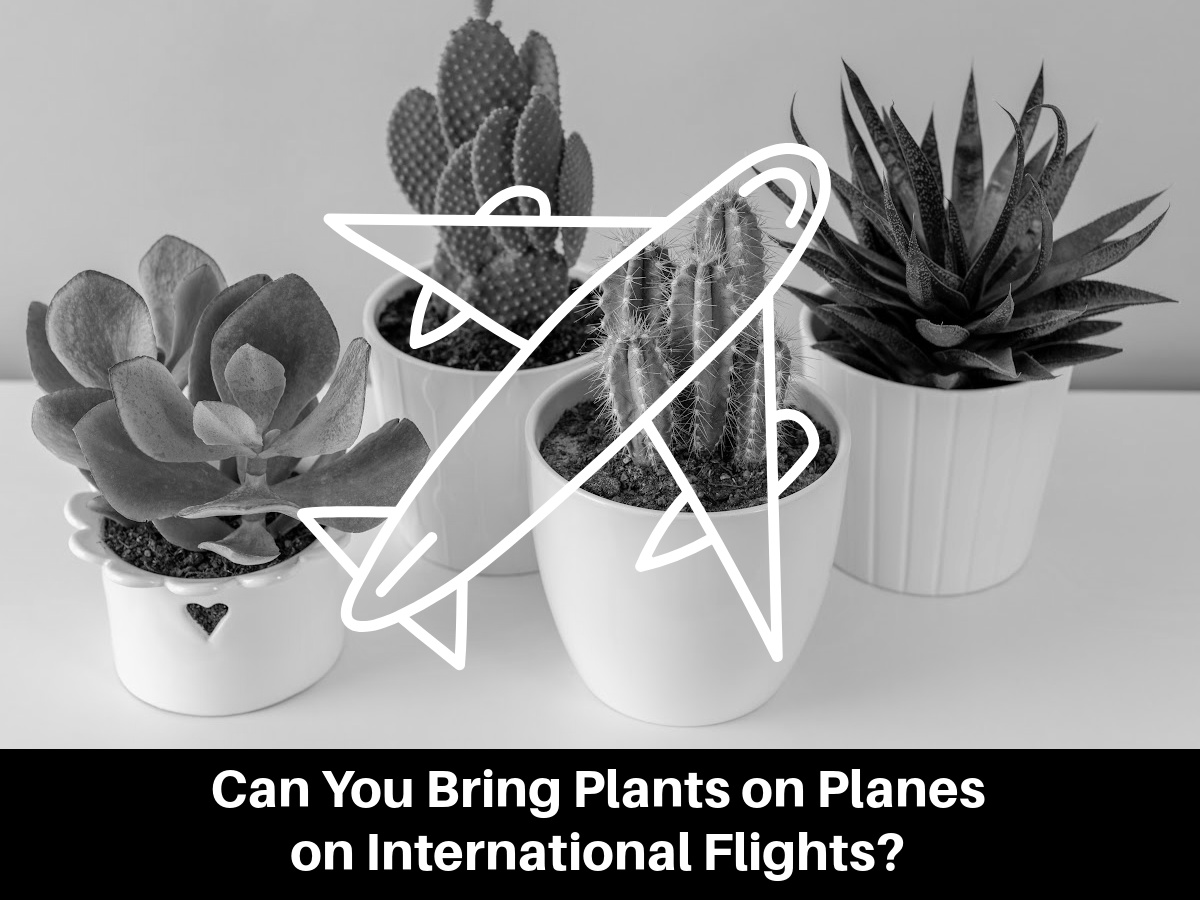The TSA, FAA, and other airline regulators allow bringing plants on planes. Plants aren’t a safety risk, so they’re allowed in hand and checked bags without restrictions. You can use them as your personal item or carry-on bag, as long as they’re within the size limits.
All plants will have to go through an X-ray scanner when going through security or when handing over checked bags. If you want to avoid this, you can always ask for an individual inspection of your plants.
But if you’ll be flying internationally, upon landing, you’ll also have to go through Customs and Immigration. And the customs agents usually have stricter restrictions regarding plants because their job is to prevent specific species, pests, and diseases from entering the country. The plant itself can be invasive, it can contain pests within the soil, or it can contain diseases.
In this article, when we’re referring to plants, we mean all plant products, including potted plants, bare-root plants, plant cuttings, seeds, parts of plants, dried plants, succulents, mushrooms, and cut flowers.

Flying With Plants Domestically
On most domestic flights, you won’t have any issues when traveling with live plants, cut flowers, seeds, and cuttings. All you need to be concerned about is packing your plant safely to avoid damaging it.
But even when flying domestically, there are some rules to follow. For example, when flying from Hawaii back to the US mainland, any plants in bare soil, cactus plants, fresh flowers of Jade Vine and Mauna Loa, and many other plants are banned. There also are certain restrictions for Puerto Rico, California, and a lot of other states. Before traveling, always check the USDA website.
Flying With Plants Internationally
The general rule of thumb is that you’re allowed to travel with any plant internationally, but you have to declare them at Customs and Immigration. The plant will be inspected there and if found to be prohibited, discarded. You will get a fine only if you don’t declare them.
In general, most houseplants, cut flowers, and decorative cactus species are allowed for import. That’s because these species are so popular that they’ve already spread across different continents and countries.
Some types of plants that are banned include invasive weeds, exotic house plants, plants of unknown origin, and plants that look infected with a disease (for example, discolored spots on leaves or the stem).
Keeping the plant labels or at least finding out its Latin name before traveling is helpful because it will speed up going through Customs.
You should also travel with plants bare-rooted. That’s because the soil can contain parasites and pests, so a lot of countries allow importing only bare-rooted plants.
When importing plants to the US, you can only bring up to 12 different plants. You also have to get a Phytosanitary Certificate, which states that the plant is free of any pests and insects, its origin, and its Latin name. You can apply for this certificate in the National Plant Protection Organization or an equal government institution in another country. But keep in mind that it may take up to 30 days to get this certificate.
When traveling within the EU, the rules are a bit simpler. As long as the plant has been grown in the EU and is free of pests and diseases, you’re allowed to take it with you. If importing a plant to the EU, you’ll also need a Phytosanitary Certificate.
How to Pack Plants in Your Luggage
Even though you’re allowed to pack plants in hand and checked baggage, you should pack them in your carry-on or personal item. That’s because plants will be more protected there from accidental damage.
Bare-Rooted Method
When traveling with plants internationally, you have to follow this method of transporting plants because they can’t contain any soil. The idea is to remove all soil and wrap it in something damp to keep the plant from drying out.
- Water the plant 2 days before flying.
- A few hours before the flight, remove all soil from the plant, exposing its roots.
- Wash the roots to get rid of any soil.
- Wrap the roots in a damp newspaper to keep them from drying out.
- Put the plant in a plastic bag and poke some holes through it to allow for some air circulation.
- Pack the plant in your checked or hand luggage.
Pot Method
When traveling domestically, you can usually keep the plant in its soil. But you still need to follow some precautions to avoid damaging the plant.
- Water the plant 2 days before flying.
- If transporting in hand luggage, on the day of the flight don’t water the plant because the soil can’t be damp.
- Cut away excess leaves that could become damaged during traveling.
- Wrap its leaves more compactly so that it takes up less space.
- Wrap the plant and the pot in a newspaper.
- Put it all in a large plastic bag with holes to allow for air circulation.
- Pack the plant in your hand or checked baggage.
Summing Up – Traveling With Plants
Traveling with plants can be intimidating if it’s your first time. But if you’re traveling within the EU or on a domestic flight, you shouldn’t have any issues. Package the plant with its pot, pack it in your carry-on or checked bag, and you’re good to go.
If traveling internationally, transport the plant bare-rooted and get its Phytosanitary Certificate. And remember to declare it at Customs and Immigration. If you follow these steps, there’s nothing to worry about – even if the plant is found to be prohibited, you shouldn’t get into trouble because you declared it.
